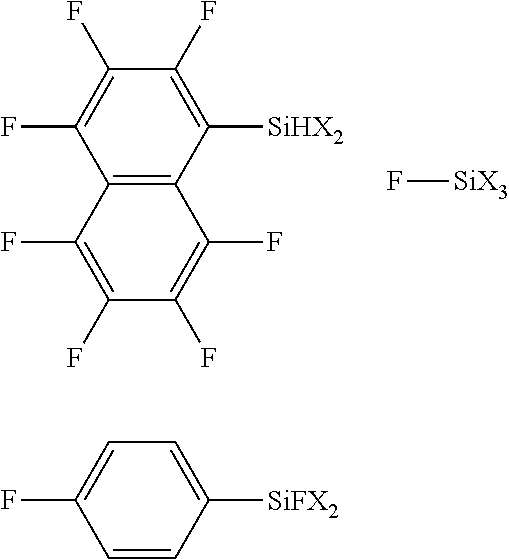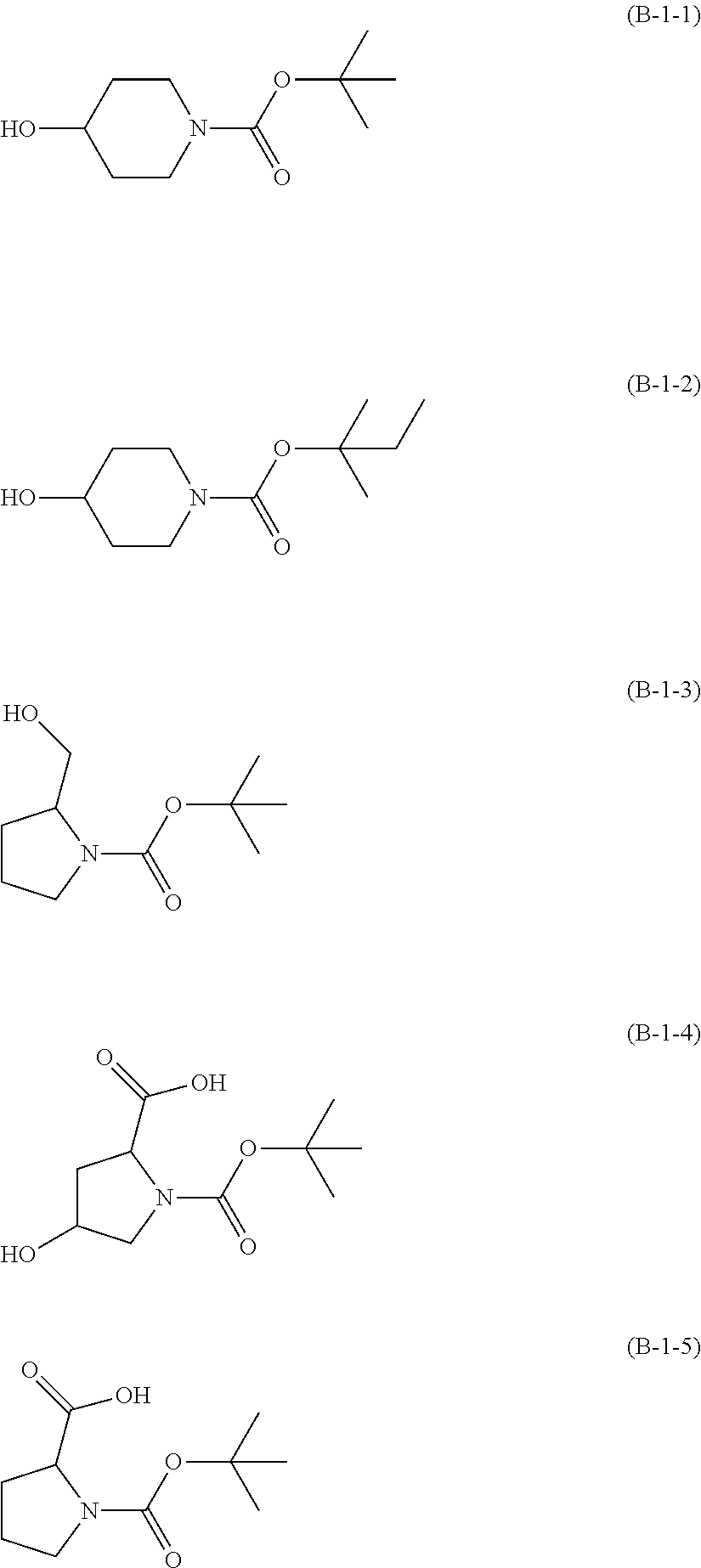Method for forming pattern, and polysiloxane composition
a polysiloxane composition and pattern technology, applied in the field of pattern formation method and polysiloxane composition, can solve the problems of achieving both and achieve the effect of high processibility and high resistan
- Summary
- Abstract
- Description
- Claims
- Application Information
AI Technical Summary
Benefits of technology
Problems solved by technology
Method used
Image
Examples
synthesis example 1
Synthesis of Polysiloxane (A-1)
[0198]1.27 g of oxalic acid was dissolved in 12.72 g of water with heating to prepare an aqueous oxalic acid solution. A flask charged with 22.38 g of the compound (M-1), 3.76 g of the compound (M-2), 1.99 g of the compound (M-5) and 58.04 g of propylene glycol monoethyl ether was fitted with a condenser and a dropping funnel containing the prepared aqueous oxalic acid solution. Next, after heating the mixture to 60° C. using an oil bath, the aqueous oxalic acid solution was slowly added dropwise to the mixture over 10 minutes, and thereafter the mixture was reacted at 60° C. for 4 hours. After completion of the reaction, the flask containing the reaction solution was allowed to cool, and then fitted with an evaporator. Methanol generated during the reaction was removed to obtain 75.0 g of a solution that includes (A-1) a polysiloxane. The solid content concentration of the solution containing the polysiloxane (A-1) was 18.0% by mass. In addition, the ...
synthesis example 2
Synthesis of Polysiloxane (A-2)
[0199]2.92 g of tetramethylammoniumhydroxide (TMAH) was dissolved in 8.75 g of water with heating to prepare an aqueous TMAH solution. Thereafter, a flask charged with 14.59 g of the prepared aqueous TMAH solution, 4.53 g of water, 40 g of methanol was fitted with a condenser and a dropping funnel containing a monomer solution obtained by dissolving 10.66 g of the compound (M-1), 3.45 g of the compound (M-2) and 1.08 g of the compound (M-5) in 50 g of methanol. Next, after heating the mixture to 50° C. using an oil bath, the monomer solution was slowly added dropwise to the mixture over 30 minutes, and thereafter the mixture was reacted at 50° C. for 2 hours. After completion of the reaction, the flask containing the reaction solution was allowed to cool. Thereafter, the reaction solution was added dropwise to 45.83 g of a maleic acid solution prepared by dissolving 5.49 g of maleic anhydride in a mixed liquid of 20.17 g of water and 20.17 g of methano...
synthesis examples 3 to 5
Synthesis of Polysiloxane (A-3), and Polysiloxanes (a-1) and (a-2)
[0200]Solutions containing (A-3) a polysiloxane, and (a-1) a polysiloxane and (a-2) a polysiloxane, respectively, were synthesized in a similar manner to Synthesis Example 1 except that each monomer having types shown in Table 1 below was used.
PUM
| Property | Measurement | Unit |
|---|---|---|
| Composition | aaaaa | aaaaa |
Abstract
Description
Claims
Application Information
 Login to View More
Login to View More - R&D
- Intellectual Property
- Life Sciences
- Materials
- Tech Scout
- Unparalleled Data Quality
- Higher Quality Content
- 60% Fewer Hallucinations
Browse by: Latest US Patents, China's latest patents, Technical Efficacy Thesaurus, Application Domain, Technology Topic, Popular Technical Reports.
© 2025 PatSnap. All rights reserved.Legal|Privacy policy|Modern Slavery Act Transparency Statement|Sitemap|About US| Contact US: help@patsnap.com



